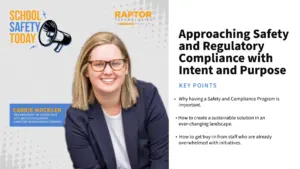K–12 Student Digital Divide Much Larger Than Thought
With the prospect of another distance learning school year on the horizon due to the coronavirus pandemic, a new analysis released this month finds that a full 15 to 16 million public school students across the United States live in households without adequate internet access or computing devices to facilitate distance learning. The analysis, from Common Sense and Boston Consulting Group, also finds that almost 10% of public school teachers (300,000 to 400,000) are also caught in the gap, affecting their ability to run remote classes. The 32-page report, Closing the K–12 Digital Divide in the Age of Distance Learning, fixes a one-year price tag of at least $6 billion and as much as $11 billion to connect all kids at home, and an additional $1 billion to close the divide for teachers.
“This new report shows that not only is the distance learning gap larger than previously estimated but that too many teachers are caught in it, too, and it will require significant and immediate investments from Congress to close it,” said James P. Steyer, CEO and founder of Common Sense. “This new data and analysis further highlights the urgency for policymakers, educators, and private companies to address this basic educational equity issue that affects kids in every state. Our report makes clear that during this age of distance learning, we have to act right now to close the digital divide that is leaving millions of kids behind.”
The new report, with state-by-state data, carefully establishes the technical requirements for adequate distance learning and examines the specific needs of different segments of the K–12 student and teacher populations with distance learning technology gaps. The report, which also highlights the need for digital literacy training for families unfamiliar with digital technology, finds that the states with the largest K–12 digital divide are largely in the south, with Mississippi, Louisiana, Arkansas, and Alabama showing the largest deficit by proportion, and Texas, California, and Florida the largest gaps by population. But, as the report notes, every state has a problem. “Even among states with the smallest divides, approximately one in four students do not have an adequate internet connection,” the report concludes.
Key findings from Closing the K–12 Digital Divide in the Age of Distance Learning:
-
Approximately 15 to 16 million K–12 public school students, or 30% of all K–12 public school students, live in households either without an internet connection or a device adequate for distance learning at home, a higher number than previously recorded; and of these students, approximately 9 million live in households with neither an adequate connection nor an adequate device for distance learning.
-
The homework gap isn’t just about homework anymore; lack of access to the internet and a distance learning device during the coronavirus pandemic school closures puts these students at risk of significant learning loss.
-
This analysis identifies students lacking baseline technology requirements for distance learning, including reliable high-speed internet, sufficient data plans, and a computer, laptop, or tablet device.
-
This digital divide is a major problem for students in all 50 states and all types of communities but is most pronounced in rural communities and households with Black, Latinx, and Native American students.
-
From 300,000 to 400,000 K–12 teachers live in households without adequate internet connectivity—roughly 10% of all public school teachers—and 100,000 teachers lack adequate home computing devices.
-
The cost of closing the digital divide for students is at least $6 billion and as much as $11 billion in the first 12 months, and it would cost an additional $1 billion to close the divide for teachers.
-
The novel coronavirus pandemic has changed the nature of the homework gap, exacerbated existing inequities in education, and heightened the urgent need for Congress and the states to provide emergency funding to ensure all students have equal access to distance learning.
-
The private sector, districts, and education-support organizations also have important roles to play in this challenge to identify the right technology that meets the unique needs of their students and teachers today while fitting their long-term digital aspirations, and that are delivered systematically and equitably to districts across the U.S.
Methodology:
The digitally divided analysis combines the nationally representative 2018 one-year survey data and micro-data from the American Community Survey with 2018–2019 school year data from the National Center for Education Statistics to identify the number of K–12 students and teachers in households that lack adequate (e.g., high-speed) internet and/or a distance learning device (e.g., a laptop or tablet). Based on data collected from desk research and stakeholder interviews, this report estimates a cost range to provide adequate distance learning technology for all students and teachers that are considered digitally divided, ranging from meeting minimum versus more robust distance learning technology needs, and based on a range of technology combinations.








